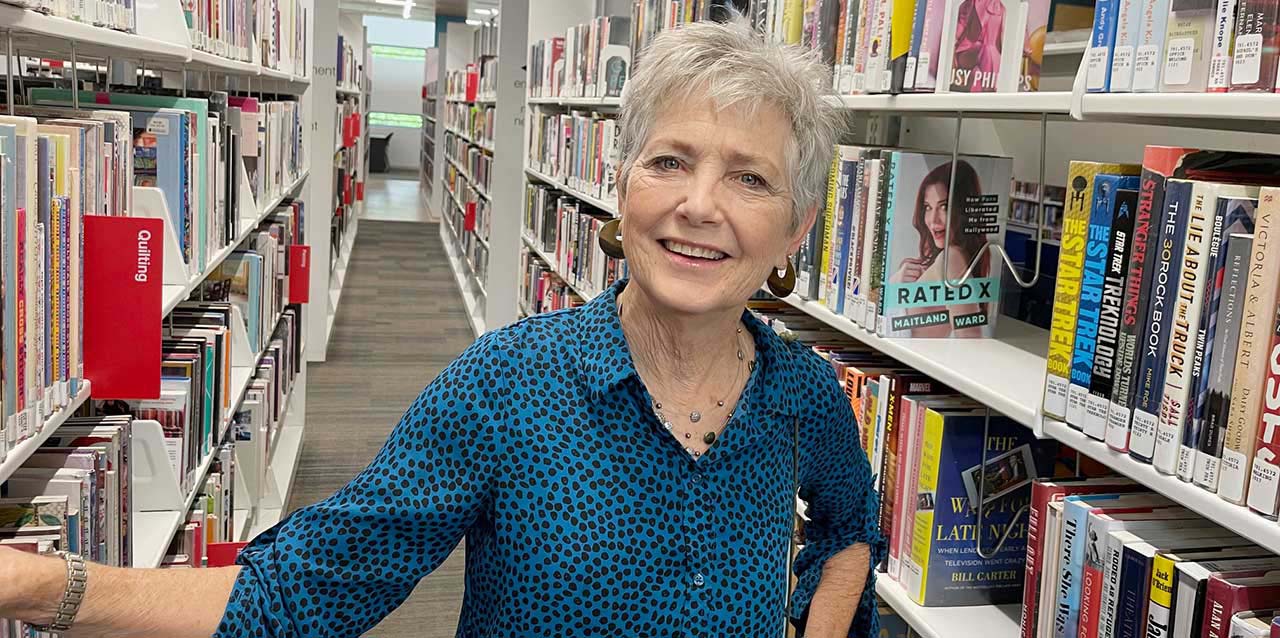Lifelong learner is intergenerational visual art educator, advocate

LAWRENCE — Liz Langdon practices what she preaches when it comes to lifelong learning. And she thinks she might be a better teacher because of it.
The University of Kansas associate teaching professor in art education did not earn her doctorate until she was 65, long after she had earned bachelor’s and master’s degrees in fine arts and education and after years of teaching at the Joslyn Art Museum and in Omaha Public Schools, Nebraska.
She joined the KU Department of Visual Art faculty as a visiting professor in 2017. Now, at age 72, Langdon is trying to make the most of her time to influence a new generation of art educators.
Langdon tells her story in a chapter titled “The Long Hill: One Lifelong Learner’s Meandering Path to the Doctorate in Art Education” in the new book “Art Education and Creative Aging: Older Adults as Learners, Makers, and Teachers of Art” (Routledge).
Her surname, Langdon, means “Long Hill” in the Celtic language of her forebears, and it’s an apt metaphor for her career.
“I earned my doctorate after several careers in art education,” Langdon said. “And, rather than retiring or only making art, I said, ‘I want to be challenged intellectually,’ which I write about in the article. It’s part of creative aging; expanding your knowledge base and working with that new knowledge base. That’s what I did. So my chapter is about the journey that got me here.”
Langdon writes of her struggle to move beyond her lifelong role as classroom teacher, who “values the personal, the particular and the experiential” and into that of researcher, who “needs to be analytical and intellectual, and to universalize and theorize. ... action research is one of the ways I blended the two.”
Young colleagues helped her “learn a new vocabulary of decolonizing language,” Langdon writes, and she delved into the work of French philosopher Gilles Deleuze for her doctoral thesis.
She said she has tried to infuse her work training new art teachers with the principle of action research and a healthy respect for the value of intergenerational art making. Last semester, for example, her students visited the residents at a local retirement community and worked with them on a project involving the stick-on rhinestone craze.
The students also researched and discussed a contemporary Black artist with the residents.
“One of the residents surprised us,” Langdon said, “with a book she was reading and thought we should, too: ‘Chasing Me to My Grave: An Artist’s Memoir of the Jim Crow South’ by Winfred Rembert, which was posthumously awarded a 2022 Pulitzer Prize.”
Lifelong learning for arts educators is important “because students get out of school with this much information,” Langdon said, holding her thumb and forefinger an inch apart. “And it's constantly changing, and there is constantly new art and artists to learn from.”
Langdon wants to research the relationship between the lifelong making of art and neuroplasticity, or the ability to make new connections within the brain, which is the opposite of the debilitating mental function that often accompanies old age.
“There are so many people with dementia and Alzheimer's disease, and the numbers are increasing,” she said. “And visual art has been shown, in some cases, to really be a gift for those people and an important practice for their happiness. But research so far is lacking. There's been a lot of research about music therapy and movement, but there's been less about visual art, and I would like that to be my focus.”
Even though her two adult daughters would welcome more of her help with the grandkids, Langdon said, “I can't leave this program. ... I'm not going to do that because I've worked really hard; because I love the students, and I love what I'm doing. And I see multiple ways we can expand what we do intergenerationally.”